Nepal, a country celebrated for its breathtaking landscapes and rich cultural tapestry, also offers an intriguing culinary scene that mirrors its diverse heritage. Among the many gastronomic delights found here, noodles stand out as a staple, enjoyed in numerous forms that reflect both local tastes and foreign influences. In this blog, we will explore the various types of noodles in Nepal, from the ubiquitous rice noodles found in savory soups to the hearty handmade noodles that define traditional dishes like Thenthuk. Whether you are a seasoned foodie or a curious traveler, join us as we delve into the delightful world of Nepalese noodles, discovering how each type is uniquely prepared and savored across this vibrant nation.
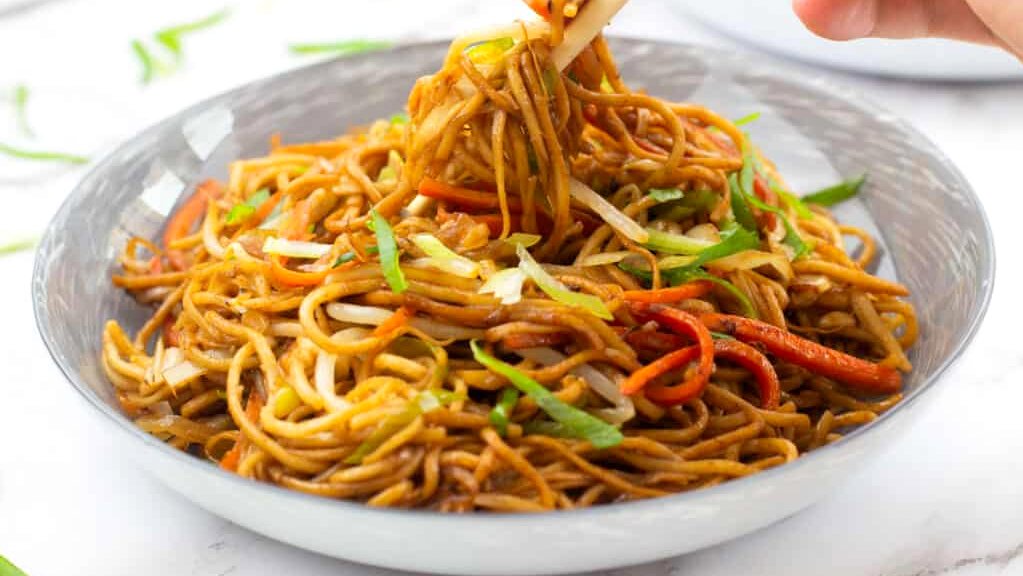
At Kathmandu Cooking Academy, we offer an extensive exploration into the Types of Noodles in Nepal. Our academy provides hands-on cooking classes where you can learn to prepare everything from traditional Thukpa to modern Chow Mein. Whether you're a novice looking to learn about Nepalese cuisine or a seasoned chef aiming to expand your noodle repertoire, our courses are designed to equip you with both the skills and knowledge to master these dishes. Join us to discover the rich variety of noodles that Nepal has to offer, right here in the heart of Kathmandu.
Thukpa
Thukpa is a traditional noodle soup that originates from Tibet but is widely popular across the Himalayan regions, including Nepal. It is a staple in the diet of many, especially in colder climates due to its warming properties. Here’s a closer look at what makes Thukpa a beloved dish:
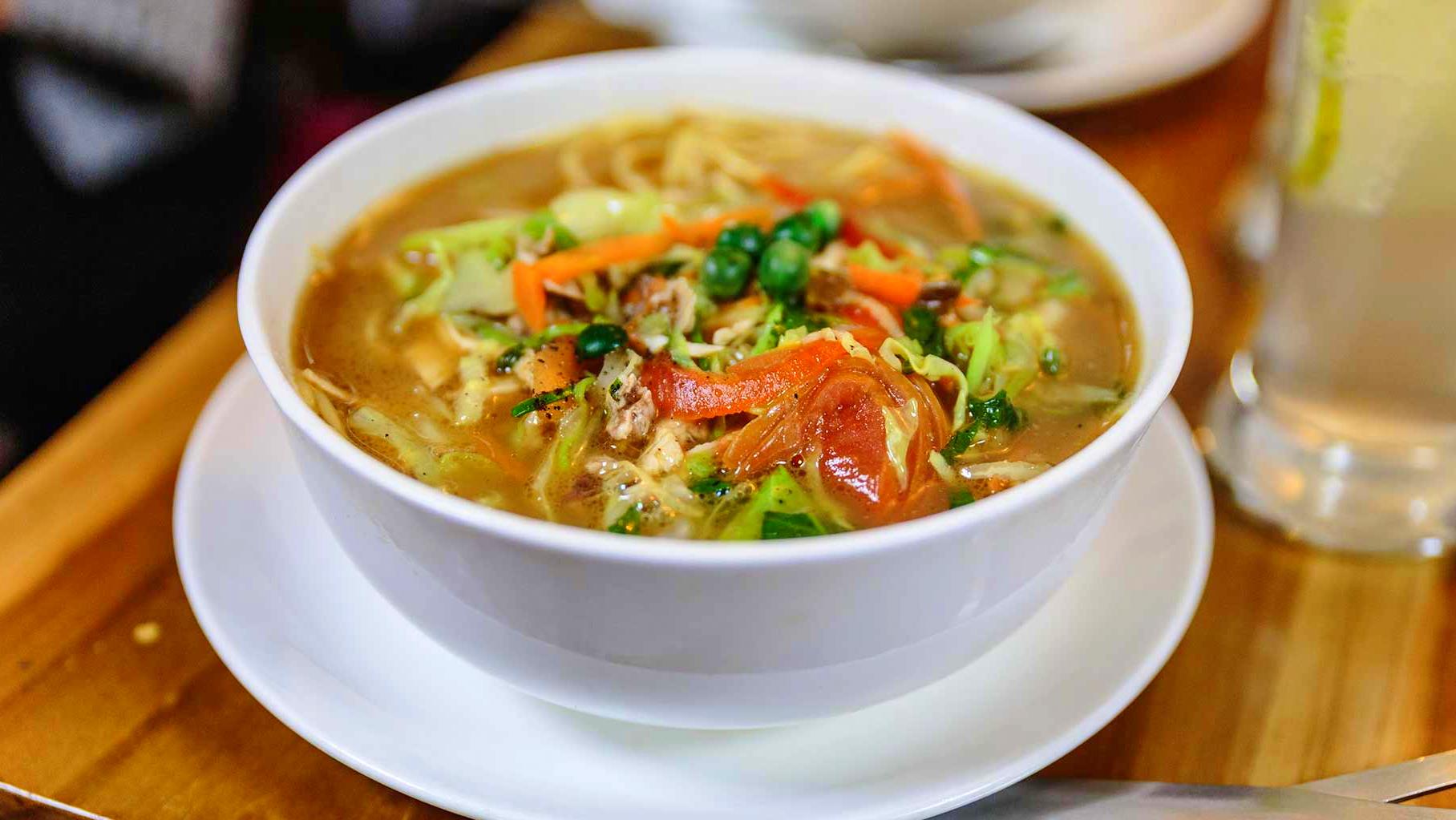
Ingredients
Thukpa generally consists of:
- Noodles: Usually made from wheat, these are hearty and provide the base for the soup.
- Broth: The soup is typically based on chicken or beef broth, but vegetarian versions with vegetable broth are also common. It's seasoned with local spices such as ginger, garlic, and sometimes Sichuan pepper.
- Meat: Common choices include chicken, beef, or mutton, although yak meat is a traditional option in Tibet.
- Vegetables: A variety of vegetables like carrots, spinach, bell peppers, and onions are added, making the soup nutritious and colorful.
Preparation
The preparation of Thukpa is straightforward:
- Broth: Start by simmering the meat with spices and herbs to create a flavorful broth.
- Vegetables and Noodles: Add the chopped vegetables to the broth and cook until tender. Then, add the noodles, cooking until they are soft.
- Serving: Thukpa is typically garnished with fresh herbs like cilantro or green onions before serving to enhance its flavors.
Cultural Significance
Thukpa is not just a meal; it's a comforting dish that brings warmth and sustenance. It is commonly enjoyed during the cold months and is a popular choice during festivals and gatherings in Nepali and Tibetan communities.
Thukpa represents a fusion of cultures and flavors that have been embraced and localized in Nepal, making it a cherished dish among both locals and visitors seeking a taste of Himalayan cuisine.
Chow Mein
Chow Mein is a popular noodle dish in Nepal, adapted from Chinese cuisine and loved for its versatility and flavorful stir-fry technique. It's a staple in restaurants and street food stalls across the country, often customized with local ingredients and spices.
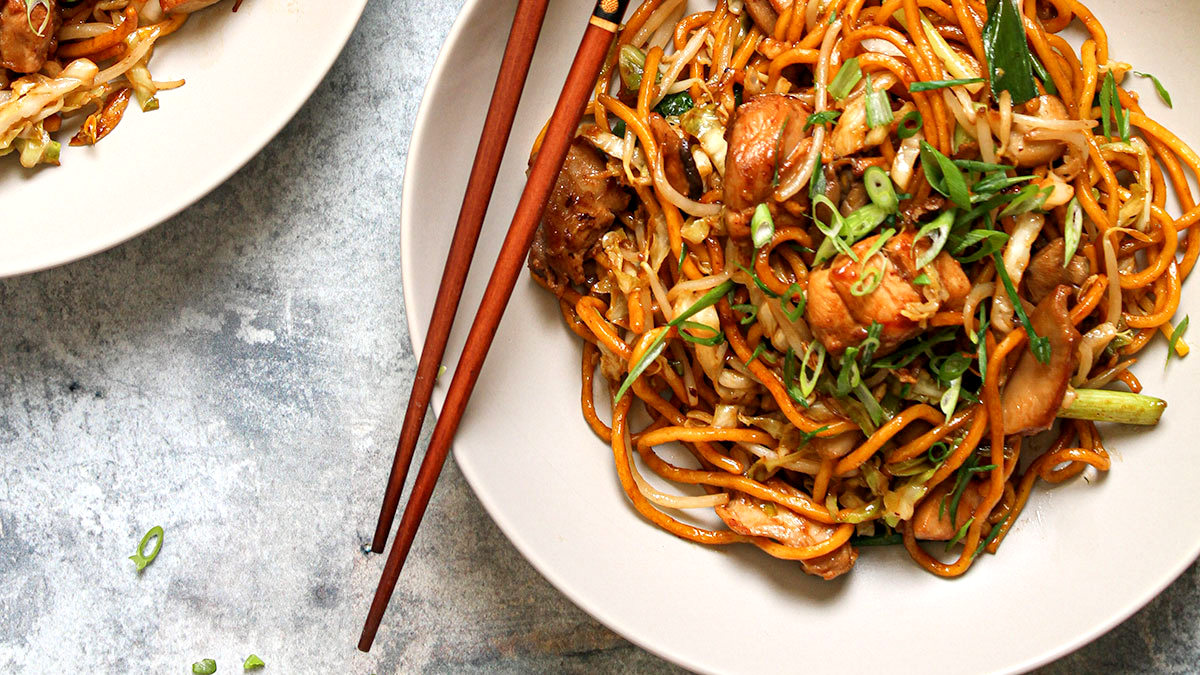
Ingredients
Typical components of Nepali Chow Mein include:
- Noodles: These are usually egg or wheat noodles, cooked al dente to maintain a slightly chewy texture.
- Vegetables: Commonly used vegetables are cabbage, carrots, bell peppers, and onions, sliced for quick cooking.
- Protein: Options include chicken, pork, or buffalo, frequently used in Nepali versions. Vegetarian options might use tofu or paneer.
- Sauces and Seasonings: Soy sauce is a key ingredient, along with garlic, ginger, and sometimes chili sauce or sesame oil for extra flavor.
Preparation
Preparing Chow Mein involves:
- Cooking Noodles: The noodles are boiled until just tender, then drained and often tossed with a little oil to prevent sticking.
- Stir-Frying: Meat and vegetables are stir-fried in a wok or large pan, starting with the meat to ensure it's fully cooked, followed by hardier vegetables like carrots, and finishing with quicker-cooking items like cabbage and onions.
- Combining: The cooked noodles are added to the wok with the vegetables and meat, along with the sauces and seasonings. Everything is tossed over high heat to blend the flavors and slightly crisp the noodles.
Cultural Adaptation
Chow Mein has been adapted to suit local tastes, often spicier and infused with local herbs and spices such as turmeric and cumin. It's not only a delicious meal but also a reflection of Nepal's ability to blend external influences with its culinary traditions.
Chow Mein in Nepal is typically served as a quick and satisfying meal, perfect for a busy day, or as a comforting dish to share with family and friends. Its popularity underscores the Nepalese penchant for adopting and adapting dishes from around the world.
Instant Noodles
Instant noodles are an incredibly popular food item in Nepal, offering a quick, affordable, and convenient meal option for people of all ages. The popularity of instant noodles in Nepal can be attributed to their versatility and the busy lifestyle of many Nepalese people, making them a staple in households, hostels, and even during trekking trips in the Himalayas.
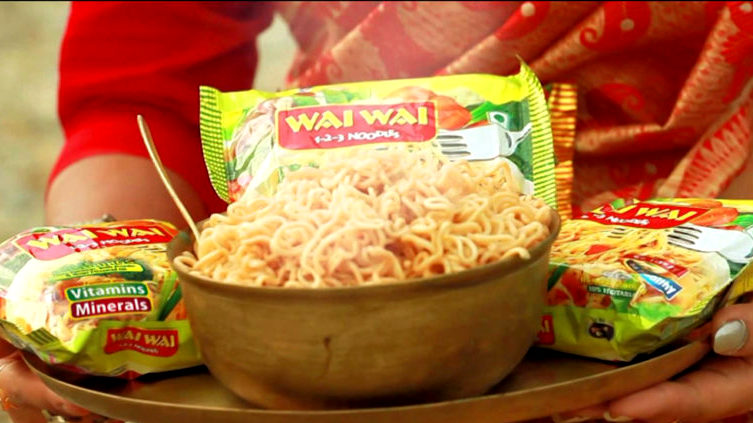
Ingredients and Varieties
Instant noodles in Nepal come in a variety of flavors and brands, with Wai Wai being one of the most popular. These noodles typically include:
- Dried Noodles: Pre-cooked and air-dried or fried noodles that can be quickly rehydrated.
- Flavor Packets: Each packet of noodles comes with flavor sachets, which may include oil, seasoning, and sometimes dehydrated vegetables or herbs.
Preparation
The simplicity of preparing instant noodles adds to their appeal:
- Boiling Water: Simply boil water and add the noodles. They cook within a few minutes.
- Adding Flavors: Stir in the seasoning packets to infuse the noodles with flavor. Some people like to add fresh ingredients such as eggs, vegetables, or meats to enhance the nutritional value and taste.
Cultural Significance
In Nepal, instant noodles are more than just a food item; they are a cultural phenomenon. They are often consumed as a snack, a quick lunch, or even as dinner. Due to their ease of preparation and storage, they are also a common choice for food supplies during trekking expeditions in remote areas of Nepal.
Social Impact
Instant noodles have also played a significant role during emergencies and natural disasters in Nepal, such as the 2015 earthquake, due to their long shelf life and ease of distribution and preparation.
In summary, instant noodles in Nepal are not only a testament to the nation's embrace of global food products but also a reflection of the practical needs and culinary creativity of the Nepalese people. They serve as a quick meal solution and have integrated deeply into the fabric of daily life and cuisine in Nepal.
Rice Noodles
Rice noodles are a versatile and popular choice in Nepalese cuisine, particularly appreciated for their light texture and ability to absorb the flavors of the dishes they are paired with. These noodles are made from rice flour and water, making them a great gluten-free option that complements a variety of Nepalese and pan-Asian dishes.
Characteristics and Varieties
Rice noodles come in several forms, ranging from thin vermicelli to thicker strands. Each type offers a different texture and suitability for various dishes:
- Thin Rice Vermicelli: Often used in soups and salads, these noodles are delicate and absorb flavors well.
- Flat Rice Noodles: These are typically wider and have a chewier texture, ideal for stir-fries and heavier sauces.
Preparation
Preparing rice noodles involves a few simple steps:
- Soaking or Boiling: Unlike wheat noodles, rice noodles are generally soaked in hot water to soften them before cooking, though some thicker varieties may require boiling.
- Cooking: After soaking, rice noodles can be quickly cooked in soups or stir-fried with vegetables and proteins. The key is to avoid overcooking, as they can become mushy.
Uses in Nepalese Cuisine
In Nepal, rice noodles are used in a variety of dishes:
- Soups: Rice noodles are a common addition to light and brothy soups, providing substance and absorbing the flavorful broth.
- Stir-Fries: Similar to chow mein but with a lighter noodle, rice noodle stir-fries incorporate local vegetables and spices, often enhanced with a splash of soy sauce or fish sauce.
- Cold Salads: During warmer months, cold rice noodle salads with fresh vegetables, herbs, and a tangy dressing are popular for their refreshing qualities.
Cultural and Nutritional Value
Rice noodles are especially important in Nepalese cuisine for their versatility and suitability for gluten-free diets. They are a good source of energy and, when combined with a variety of vegetables and proteins, contribute to a balanced meal.
Rice noodles in Nepal serve as a foundational ingredient in both everyday meals and special dishes, adapting well to the diverse culinary landscape of the country. Their lightness and dietary inclusivity make them a favored choice among Nepalese families and food enthusiasts alike.
Handmade Noodles
Handmade noodles hold a special place in Nepalese cuisine, cherished for their fresh, authentic texture and the craftsmanship involved in their preparation. These noodles are typically made from simple ingredients like wheat flour, water, and sometimes a pinch of salt, but the real art lies in the manual process of kneading, rolling, and cutting or stretching the dough into strands.
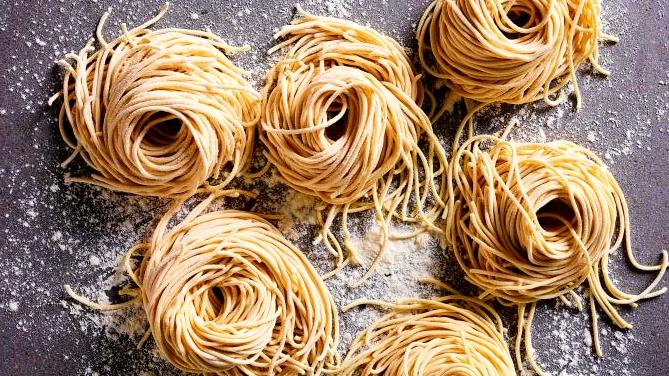
Characteristics and Preparation
Making handmade noodles is a labor of love and skill:
- Dough Preparation: The process begins with mixing flour and water to form a dough. This dough is then kneaded until it becomes smooth and elastic.
- Rolling and Cutting: The dough is rolled out into thin sheets and then cut into strips with a knife, or it can be pulled and stretched into thinner noodles depending on the desired thickness.
- Cooking: Once shaped, the noodles are cooked immediately in boiling water for a few minutes until they float to the surface, indicating they are ready.
Uses in Nepalese Cuisine
In Nepal, handmade noodles are commonly used in dishes like:
- Thukpa: A hearty noodle soup filled with vegetables and meat, enriched with a flavorful broth.
- Thenthuk: This is another variety of Tibetan noodle soup popular in Nepal, featuring roughly hand-pulled wheat noodles in a vegetable or meat broth.
Cultural Significance
The tradition of making noodles by hand is deeply rooted in local customs and often considered a vital culinary skill in Nepalese households, particularly in regions with Tibetan influences. These noodles are not just about sustenance but also about preserving and passing down a culinary heritage that embodies the Nepalese spirit of hospitality and community.
Social and Family Gatherings
Handmade noodles are often prepared during special occasions and festivals. The process of making noodles can become a communal activity, bringing family members together to share in the task and subsequently enjoy the fruits of their labor.
Handmade noodles in Nepal exemplify the blend of tradition and taste that is central to the nation's culinary practices. They offer a distinctively satisfying chewiness and freshness that machine-made noodles cannot replicate, making them a beloved choice for both everyday meals and celebratory feasts.
Buckwheat Noodles
Buckwheat noodles are a nutritious and traditional choice in various parts of Nepal, especially in the mountainous regions where buckwheat is more commonly cultivated due to its adaptability to harsher climates. Known locally as "Phapar," buckwheat is valued not only for its robust flavor but also for its health benefits, including high protein content and gluten-free nature.
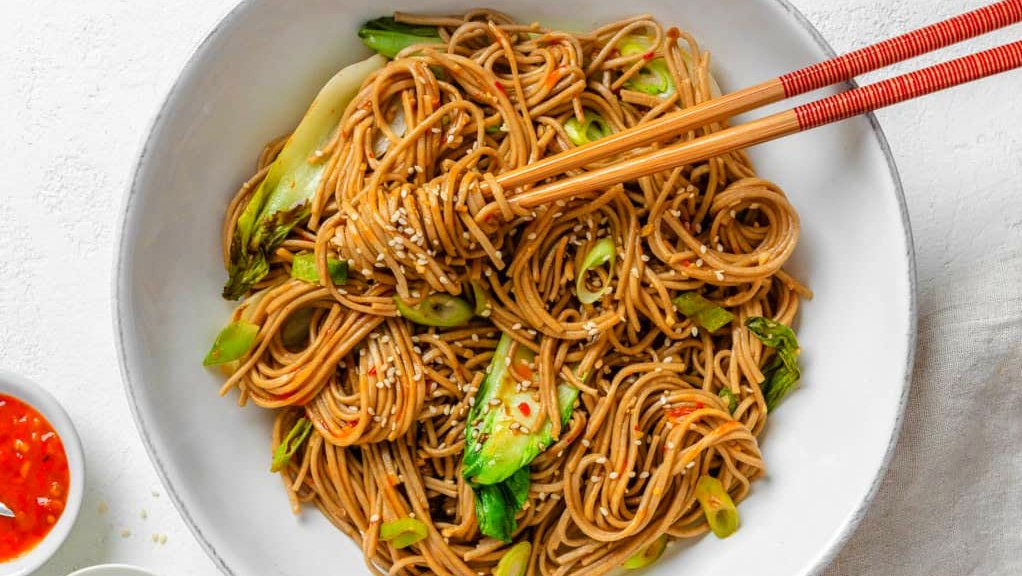
Characteristics
Buckwheat noodles are made primarily from buckwheat flour, which gives them a distinct earthy taste and a darker color compared to regular wheat noodles. They are typically thicker and have a firmer texture, which holds up well in both soups and stir-fries.
Preparation
Making buckwheat noodles involves:
- Mixing Dough: Buckwheat flour is combined with water (and sometimes a small amount of wheat flour to aid texture) to form a stiff dough.
- Rolling and Cutting: The dough is then rolled out thinly and cut into strips. The noodles can also be hand-pulled, though this is less common with buckwheat due to its lack of gluten.
- Cooking: The noodles are boiled until they are soft but still have a slight chew, which usually takes a few minutes longer than conventional wheat noodles.
Uses in Nepalese Cuisine
Buckwheat noodles are versatile and can be used in a variety of dishes:
- Soups: They are commonly served in brothy soups, where their robust texture and flavor complement hearty ingredients like vegetables and meat.
- Stir-Fries: Buckwheat noodles also perform well in stir-fried dishes, absorbing flavors while maintaining their texture.
- Cold Salads: In warmer months, they are often used in refreshing noodle salads, dressed with sesame oil, soy sauce, and fresh herbs.
Cultural Significance
In Nepal, buckwheat is more than just a crop; it's a vital component of the local diet, particularly in areas where few other cereals can grow. Buckwheat noodles, therefore, are not just a food item but a crucial part of food security and cultural identity in these regions.
Health Benefits
Buckwheat noodles are highly regarded for their nutritional profile. They are a good source of energy, high in minerals like magnesium and phosphorus, and are gluten-free, making them suitable for those with gluten intolerance or celiac disease.
Buckwheat noodles represent an important facet of Nepalese culinary traditions, offering a delicious and healthful option that stands out for its unique flavor and cultural relevance. They embody the adaptability of Nepalese cuisine, incorporating local ingredients into dishes influenced by broader Asian culinary practices.
The diverse range of noodles in Nepal exemplifies the rich tapestry of its culinary culture, blending local traditions with influences from neighboring regions. From the hearty, warming Thukpa to the versatile and beloved instant noodles, and from the rustic charm of handmade noodles to the nutritious buckwheat varieties, each type of noodle brings its unique flavor and texture to the Nepalese table. These noodle dishes not only provide a delicious insight into the country's gastronomic heritage but also reflect the adaptability and creativity of Nepalese cuisine. As such, they are much more than just food; they are a celebration of Nepal's cultural diversity and culinary innovation.

